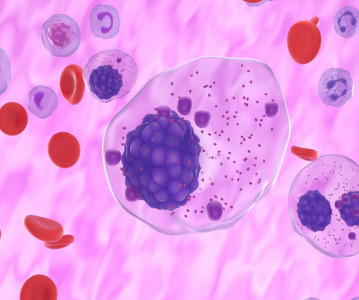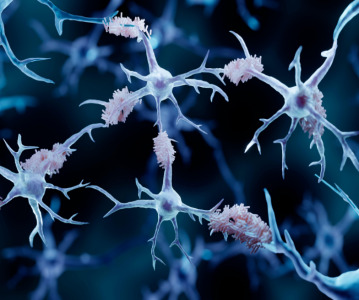Anti-HIV Drugs May Protect Against Puberty Delays in HIV-Infected Children
For children who have been HIV-infected since birth, current anti-HIV drug regimens may protect against the delays in puberty that had been seen in HIV-infected children taking older regimens, according to researchers funded by the National Institutes of Health.
HIV appears to delay puberty. Among children born before 1990, more than 10% of HIV-positive girls and boys had not entered puberty by 12 and 13 years of age, respectively. However, a study published in the journal AIDS has found that puberty was delayed for less than 1% of children born since 1997, when more effective anti-HIV drug therapies became widely available. Combination antiretroviral treatments — three or more drugs from two or more different anti-HIV drug classes — are now the standard therapy.
Presumably, improved health resulting from the more effective therapy allows the children to enter puberty on a more age appropriate timetable, said study author Rohan Hazra, MD, of the Maternal and Pediatric Infectious Disease Branch of the Eunice Kennedy Shriver National Institute of Child Health and Human Development (NICHD).
Based on information collected over 12 years from more than 2000 HIV-infected boys and girls, the researchers found that for each year of combination antiretroviral treatment a child received, puberty started about a month earlier when compared with children with HIV who took other drug therapies or no drugs at all.
“More than 80% of the children in the study born after 1997 are on a combination regimen, so it was difficult to make a comparison between those who received the therapy and the comparatively small number who did not,” said the study’s first author, Paige Williams, PhD, of the Harvard School of Public Health, Boston. “However, the trend in the data suggests that children taking modern drug regimens are likely to experience puberty closer in time to that of their HIV-negative peers.”
The study also included researchers at the University of Colorado School of Medicine and Children’s Hospital Colorado, Aurora; Tulane University School of Medicine, New Orleans; Indiana University School of Medicine, Indianapolis; New York University School of Medicine; New Jersey Medical School, Newark; and Children’s Hospital Los Angeles.
Data for the study were obtained from three NICHD-supported HIV research networks: The International Maternal, Pediatric, Adolescent AIDS Clinical Trials (IMPAACT) Network, the Pediatric AIDS Clinical Trials Group (a predecessor of the IMPAACT Network) and the Pediatric HIV/AIDS Cohort Study.
Major funding for this study came from NICHD and the National Institute of Allergy and Infectious Diseases, also part of NIH. Additional support came from six other NIH institutes: the National Institute of Mental Health, the National Institute on Deafness and Other Communication Disorders, the National Heart, Lung, and Blood Institute, the National Institute of Neurological Disorders and Stroke and the National Institute on Alcohol Abuse and Alcoholism.
To conduct their study, the researchers analysed data from more than 2000 boys and girls with HIV and from an additional 500 boys and girls exposed to HIV before and during birth but who did not become HIV infected. The researchers analysed data obtained on these boys and girls starting from age 7. During the children’s study visit, clinicians assessed the beginning of puberty by noting typical physical changes that occur in adolescence, such as the appearance of pubic hair and the development of breast tissue or genitals.
Researchers confirmed previous findings indicating that HIV can delay the start of puberty. HIV-positive boys started developing pubic hair and larger genitals when they were about 11.5 years old, on average — about a year later than their HIV-negative peers. HIV-positive girls started developing breasts and pubic hair when they were 10.5 years old, compared with 9.5 to 10 years old, on average, for HIV-negative girls. For their analysis, the researchers took into account the trend in recent years toward earlier puberty in US children, as well as racial and ethnic differences in the timing of puberty. However, even after adjusting for these factors, the researchers found that puberty began 4 to 6 months later in HIV-positive boys and girls than in children who did not have HIV.
“In studies of the general population, maturing later has been linked to lower self-esteem and depression, and delays also raise concerns about a person’s future reproductive health,” Dr Hazra said. “So differences of 4 to 6 months may have significant effects.”
The researchers also confirmed that the youth with the most severe symptoms of HIV infection tended to have the greatest delays in puberty.
“As combination regimens for treating HIV have become more widespread, children’s growth has improved and their physical maturation is much closer to the norm,” Dr Williams added. “Today’s recommended treatments for HIV appear to have a protective effect in these regards.”
Related News
-
News BioNTech to begin mRNA vaccine manufacturing in Rwanda by 2025
German biotechnology company BioNTech has stated their intentions to begin production at their mRNA vaccine factory in Rwanda by 2025, which will mark the first foreign mRNA vaccine manufacturing site on the continent of Africa. -
News Identifying Alzheimer’s Disease biomarker proteins with whole blood tests
A University of Manchester spin-out pharmaceutical company, PharmaKure, has reported successful study results for the quantification of Alzheimer’s Disease biomarker proteins with a whole blood test. -
News Bill & Melinda Gates Foundation to boost mRNA vaccine initiatives in Africa with USD $40m
To address vaccine inequality and accessibility issues, the Bill & Melinda Gates Foundation aims to deliver USD $40m to various biotech companies and vaccine manufacturers in support of mRNA vaccine development. -
News CPHI Podcast Series: Exploring neurological frontiers in Alzheimer's and beyond
The next episode of the CPHI Podcast Series delves into the science and background behind some recent developments in the field of Alzheimer's disease and neurological disorders. -
News Is patient centricity the future of pharmaceutical manufacturing?
In this interview with Sandra Sánchez y Oldenhage, President of PharmAdvice, she speaks to the importance of considering patients in the manufacturing stages of the pharmaceutical supply chain, and how it can redefine healthcare. -
News CPHI Podcast Series: How to leverage AI for Drug Discovery
Artificial intelligence is the topic of debate in the latest episode from the CPHI Podcast Series, where Digital Editor Lucy Chard speaks with Bill Whitford of DPS Group about the integration of AI in healthcare. -
News Pfizer forges ahead with blood cancer therapy after approval from FDA
Pfizer gains accelerated approval from the US FDA for their new bispecific antibody therapy for multiple myeloma, set to address an unmet need for patients. -
News Alzheimer's drug donanemab deemed effective in landmark clinical trial
Results from the TRAILBLAZER-ALZ 2 Randomised Clinical Trial into the use of donanemab to treat early symptoms of Alzheimer’s disease have been analysed.
Position your company at the heart of the global Pharma industry with a CPHI Online membership
-
Your products and solutions visible to thousands of visitors within the largest Pharma marketplace
-
Generate high-quality, engaged leads for your business, all year round
-
Promote your business as the industry’s thought-leader by hosting your reports, brochures and videos within your profile
-
Your company’s profile boosted at all participating CPHI events
-
An easy-to-use platform with a detailed dashboard showing your leads and performance







